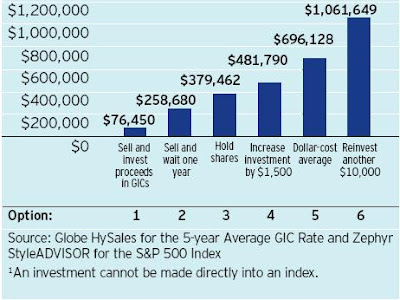
On January 27, 2009, Federal Finance Minister Jim Flaherty presented the government’s budget for 2009, entitled Canada’s Economic Action Plan. The stated goals of the budget are to stimulate economic growth, support Canadians and invest in Canada’s long-term growth. Considering the current state of the global and domestic economies, it comes as no surprise that the proposed measures are predominantly directed towards economic stimulus. Nevertheless, there are a number of changes which will be relevant at a personal level and which, taken together, provide modest tax relief.
Non-Refundable Tax Credits1
• The basic personal amount, spousal and common-law partner amount and eligible dependant amount increase to $10,320.
• The upper thresholds for the two lowest income tax brackets increase to $40,726 and $81,452, respectively, with no change in the applicable tax rates.
• The age amount for seniors aged 65 or older increases to $6,408, and the income level at which the age amount is fully phased out increases to $75,032. 1 Indexed for inflation in subsequent years.
RRSP/RRIF Losses after Death
• In the event of losses in an RRSP or RRIF following death but before distribution of proceeds to beneficiaries, the losses can be carried back and deducted against RRSP or RRIF income for the year of death.
Homeowners and Home Buyers
• Homeowners may claim a home renovation tax credit on their 2009 tax return of up to 15% of eligible renovation costs incurred between January 27, 2009 and February 1, 2010. This non-refundable tax credit applies to the portion of renovation costs exceeding $1,000 and up to $10,000, for a maximum credit of $1,350 per family. This credit is in addition to other grants and tax credits which may be available, such as the ecoENERGY retrofit program.
• The withdrawal limit under the Home Buyers’ Plan increases to allow up to $25,000 to be withdrawn from a RRSP, an increase of $5,000.
• First-time home buyers may also claim a non-refundable $5,000 tax credit on the purchase of a qualifying home. Individuals eligible for the disability tax credit may also claim this amount if the home purchase improves accessibility or is better suited to the needs and care of the disabled person.
Non-Refundable Tax Credits1
• The basic personal amount, spousal and common-law partner amount and eligible dependant amount increase to $10,320.
• The upper thresholds for the two lowest income tax brackets increase to $40,726 and $81,452, respectively, with no change in the applicable tax rates.
• The age amount for seniors aged 65 or older increases to $6,408, and the income level at which the age amount is fully phased out increases to $75,032. 1 Indexed for inflation in subsequent years.
RRSP/RRIF Losses after Death
• In the event of losses in an RRSP or RRIF following death but before distribution of proceeds to beneficiaries, the losses can be carried back and deducted against RRSP or RRIF income for the year of death.
Homeowners and Home Buyers
• Homeowners may claim a home renovation tax credit on their 2009 tax return of up to 15% of eligible renovation costs incurred between January 27, 2009 and February 1, 2010. This non-refundable tax credit applies to the portion of renovation costs exceeding $1,000 and up to $10,000, for a maximum credit of $1,350 per family. This credit is in addition to other grants and tax credits which may be available, such as the ecoENERGY retrofit program.
• The withdrawal limit under the Home Buyers’ Plan increases to allow up to $25,000 to be withdrawn from a RRSP, an increase of $5,000.
• First-time home buyers may also claim a non-refundable $5,000 tax credit on the purchase of a qualifying home. Individuals eligible for the disability tax credit may also claim this amount if the home purchase improves accessibility or is better suited to the needs and care of the disabled person.
Mineral Exploration Tax Credit
• Eligibility is extended by one year for flow-through share agreements entered into before April 1, 2010.
The information contained in this publication was obtained from sources believed to be reliable; however, DundeeWealth Inc., its affiliates, directors, officers, and officers or directors of its affiliates cannot guarantee its accuracy or completeness. This publication is for informational purposes only and should not solely be relied upon. Please consult your professional tax or legal advisor for advice related to your specific situation.
• Eligibility is extended by one year for flow-through share agreements entered into before April 1, 2010.
The information contained in this publication was obtained from sources believed to be reliable; however, DundeeWealth Inc., its affiliates, directors, officers, and officers or directors of its affiliates cannot guarantee its accuracy or completeness. This publication is for informational purposes only and should not solely be relied upon. Please consult your professional tax or legal advisor for advice related to your specific situation.




